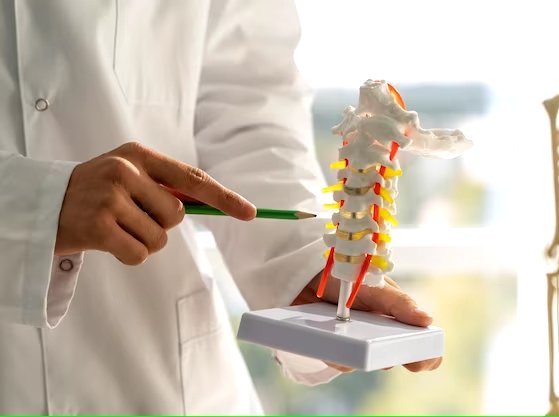Nutrition for Back Cartilage
Introduction:

Maintaining a healthy back is crucial for overall well-being, and one of the key components is the cartilage that supports and cushions the spinal joints. As we age or subject our bodies to poor dietary choices and sedentary lifestyles, the cartilage in our back may undergo wear and tear, leading to discomfort and decreased mobility. Fortunately, adopting a diet rich in nutrients that promote joint health can play a significant role in supporting back cartilage and overall spinal health. In this article, we will explore the importance of healthy food choices in nourishing back cartilage and suggest a well-rounded dietary approach for a strong and flexible spine.
- Embrace Omega-3 Fatty Acids:
Omega-3 fatty acids are renowned for their anti-inflammatory properties, making them essential for maintaining healthy joints, including back cartilage. Fatty fish like salmon, mackerel, and sardines are excellent sources of omega-3s, which can help reduce inflammation and protect cartilage from degradation. For individuals following a plant-based diet, options like chia seeds, flaxseeds, and walnuts can provide a rich source of alpha-linolenic acid, a precursor to omega-3s.
- Include Collagen-Boosting Foods:
Collagen is a vital protein that supports the structure of cartilage and promotes its resilience. Consuming foods rich in collagen-boosting nutrients can aid in maintaining the health of your back cartilage. Bone broth, which is made by simmering bones and connective tissues, is a natural source of collagen. Additionally, vitamin C-rich foods like oranges, strawberries, and broccoli help support collagen synthesis within the body.
- Opt for Antioxidant-Rich Fruits and Vegetables:
A diet abundant in antioxidants is crucial for protecting cartilage from oxidative stress and cellular damage. Colorful fruits and vegetables such as berries, spinach, kale, and bell peppers are packed with antioxidants like vitamins C and E, which can neutralize harmful free radicals and support back cartilage health.
- Emphasize Foods Rich in Calcium and Vitamin D:
Calcium is an essential mineral for maintaining bone health, and vitamin D aids in its absorption. Strong bones provide a stable foundation for the cartilage in the spine. Include calcium-rich foods such as dairy products, leafy greens, and almonds, while also ensuring adequate sun exposure or vitamin D supplementation.
- Limit Sugar and Processed Foods:
Excess sugar consumption and processed foods can trigger inflammation and exacerbate joint discomfort. Reducing the intake of sugary beverages, refined carbohydrates, and processed snacks can promote a healthier back and overall well-being.
- Hydration for Joint Lubrication:
Staying hydrated is essential for maintaining the fluid balance in our joints. Drinking sufficient water helps ensure that the spinal cartilage remains adequately hydrated, facilitating smooth movements and minimizing friction within the joints.
Conclusion:
A well-balanced diet is a powerful tool for nurturing the health of your back cartilage and maintaining spinal flexibility. By incorporating omega-3 fatty acids, collagen-boosting foods, antioxidant-rich fruits and vegetables, calcium, and vitamin D, individuals can actively support their back cartilage and reduce the risk of discomfort and joint issues. Furthermore, avoiding excessive sugar and processed foods can help mitigate inflammation, promoting a healthier back and overall spinal health. Alongside a nutritious diet, regular exercise and maintaining a proper posture are essential components of a holistic approach to back health, ensuring a strong and resilient spine for years to come. Always consult with a healthcare professional or a registered dietitian before making significant changes to your diet or lifestyle.
Hi! @hussein12, The image in your post is not copyright free. Please use copyright free image. Source
If you want you can use copyright-free images in your post which is completely free. Hope you don't do this kind of work anymore. Some free image site link below:
https://pixabay.com/
https://www.pexels.com/
https://unsplash.com/